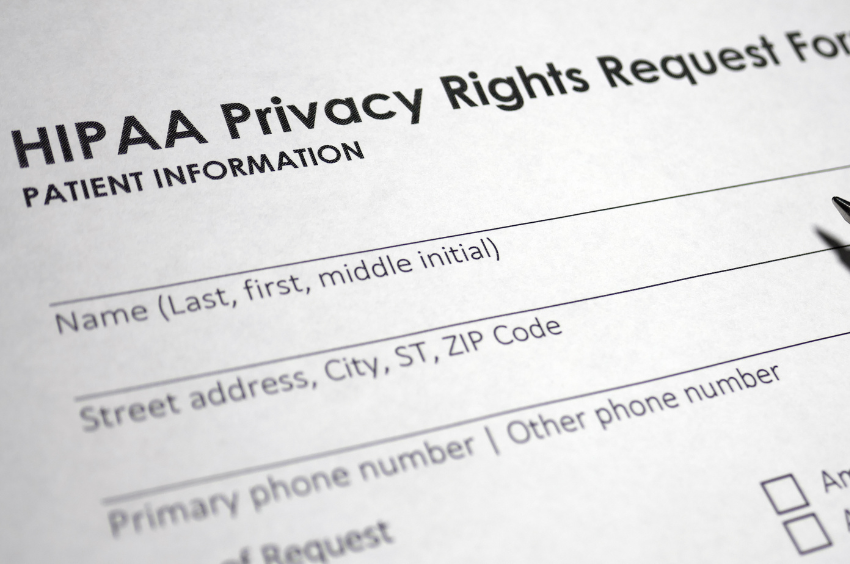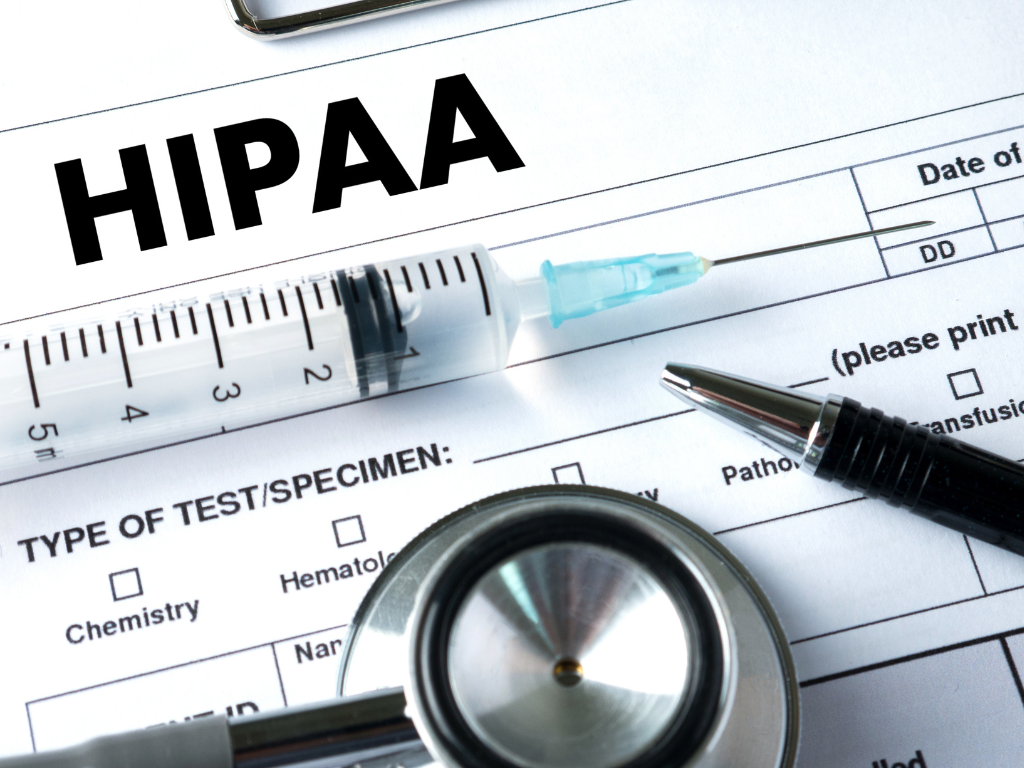If you are a covered entity under the Health Insurance Portability and Accountability Act (HIPAA), it is your responsibility to safeguard any document with sensitive health information.
So how do you know if you are what the law considers a “covered entity”? You might think it’s safe to assume that since you are not a healthcare provider, you are not required to abide by HIPAA regulations.
Well, not quite.
This post will help you determine whether you qualify as a covered entity and why you should safeguard your patient’s health information to the best of your ability.

What Is a Covered Entity?
A covered entity refers to any individual or organization in the healthcare industry with access to protected health information (PHI). They directly process and transmit documents with PHI as part of their services.
Covered entities must comply with HIPAA’s privacy, security, and breach notification rule. Under these rules, the entity should implement administrative and physical safeguards to ensure the confidentiality and integrity of PHI.
HIPAA-covered entities fall into three categories:
- Entities under health plans include those who manage healthcare data as insurance providers.
- Clearinghouses, on the other hand, are the ones that facilitate the processing of claims and therefore act as an intermediary between the healthcare provider and insurance payer.
- Healthcare providers offer medical treatment or care. Among them are individuals or organizations that are qualified to do a variety of non-surgical and cognitive procedures.
To be considered a covered entity, the individual or organization must be one of the following:
- Doctors
- Dentists
- Nurse practitioners
- Psychologists
- Chiropractors
- Physical therapists
- Clinical assistants
- Pharmacists
- Hospitals
- Treatment centers
- Clinics
- Clearinghouses
- Health plan providers
Quick Facts About Covered Entities
Here are some quick facts about covered entities that you need to be aware of:
- Healthcare providers are not required to obtain the patient’s consent when sharing PHI for treatment.
- You are allowed to share vital health information with the patient’s caregiver and family members as long as the patient does not object.
- There’s no need to restrict calls or hospital visits except in cases that might compromise a patient’s safety during treatment.
- You can communicate with patients and other providers via electronic means like email and fax as long as you’ve implemented the appropriate measures to protect their privacy.
- In cases of abuse or domestic violence, you are free to report the incident to the appropriate law enforcement authorities.

Frequently Asked Questions About Covered Entities
Here are some frequently asked questions about covered entities that you wouldn’t want to miss:
What does a covered entity do?
Covered entities under HIPAA must follow the requirements for compliance, which include implementing access controls and authenticating PHI to prevent tampering and falsification. They should also carry out strict protocols for transmitting electronic health records (EHRs).
It is also a must for these entities to implement audit controls to ensure the accuracy of health information and prevent fraud.
The HIPAA law requires these entities to implement a fully automated user logout system for computers, phones, and tablets. Such a system is necessary to minimize the risks of accidental disclosure due to unattended workstations.
What is the difference between a covered entity and a business associate?
A covered entity is an individual or institution with direct access to sensitive health information. A business associate is a person or agency who does business with these particular individuals and institutions as part of a deal or sale agreement.
For example, if a chiropractic clinic seeks the service of an accountant, then the latter becomes the covered entity’s business associate. Therefore, the accountant must abide by the compliance requirements set by HIPAA.
The best way to prove this is by signing a BAA (business associate agreement), which will hold them accountable for any failure that could result in a privacy breach or data loss.
What happens when a covered entity fails to meet HIPAA requirements?
Failure to comply with the standards set by HIPAA could result in costly penalties and serious violations. Depending on the severity of the damage and type of disclosed information, an individual or organization may be deemed guilty of civil or criminal violations. In case of a breach, the covered entity must also follow the specific guidelines for breach notifications.

The Role of Esignatures in HIPAA Compliance
Covered entities must implement proper safeguards to protect PHI from all forms of breaches, including phishing and malware attacks. What could be a better way to maintain the integrity of confidential documents than to use a legally binding electronic signature that duly meets HIPAA requirements?
To preserve document integrity, choose an electronic signature app with the highest level of encryption. It prevents tampering by generating a unique hash for each completed transaction. This means that unauthorized persons cannot access or share your patient’s sensitive health information.
Esignature solutions usually have real-time audit logs that you can refer to in case you need to check for specific events and errors. You can quickly tell if someone has tried to falsify the signature or alter the contents of the signed healthcare form.
Signing documents with digital signatures also eliminates the need to store healthcare records in file cabinets. There’s no need for legacy machines such as printers and photocopiers. You can also avoid losses due to fires, earthquakes, and floods when you store healthcare records in a cloud-based repository.
Things to Remember When Signing Electronic Documents
Here are some things to remember when using electronic signatures to sign documents that contain PHI:
- Make sure that the esignature app you’re using is HIPAA compliant. The easiest way to know this is when the esignature software vendor has a badge showing HIPAA compliance. They should also be willing to sign a BAA.
- See to it that duly signed documents with sensitive health information have detailed audit logs.
- When collecting signatures, always double-check each signed document for any discrepancy, fraud, or tampering. The hash of the signed copy must match the one in your online repository.
- Never disclose the details of the digitally signed documents to unauthorized persons, even if you’re part of the same company or organization.
- Remember that electronic signatures are only considered valid and legally binding if signed by all parties. Thus, having a letter of intent is required to finalize the agreement. It should state that all parties agree to sign the document in electronic form.

The Fastest Way to Get HIPAA Documents Signed
As a covered entity, you cannot simply entrust confidential documents to anyone. It needs to be a company or business that you can trust. Luckily, you don’t need to look elsewhere. Fill offers a seamless way to sign, store, and manage healthcare documents with PHI.
On top of this, our HIPAA-compliant esignature app can also protect your confidential healthcare documents with the highest level of encryption. Even if someone tries to steal your data, it will be nearly impossible for them to do so even with brute force.
With Fill esignatures, you can integrate document signing into your organization’s existing EHR or EMR system. There is no need to rely on third-party applications.
You can streamline and automate your document signing in a way that doesn’t require sending copies back and forth. Plus, you instantly get a signed copy without having to ask your signatory to send the duly signed form.
And the best part is you can sign documents from anywhere using a tablet or smartphone. This gives you more time to take care of urgent tasks instead of focusing on tedious paperwork.
If you want to keep PHI safe without worrying about penalties and fines, now is the perfect time to create a Fill account. Start using Fill for free. Better yet, subscribe to our paid plans to access premium features like custom branding and signer ID verification.




